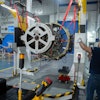When making adjustments to organization structure we should consider more than just the objective, functional sensibilities, but also the personal and especially the communication elements of our organizations.
The fourth quarter transition into the first quarter of a new year is a naturally disruptive period for most businesses, filled with anxiety over meeting year-end and fourth-quarter objectives as well as hopes that the final push will leave the business healthy enough to remove some constraints or otherwise enable some decisions in the first quarter. One of those decisions is often an investment in manpower or additional skills.
The fourth to first quarter transition is a time when many businesses make adjustments to their organizations. Leaders change responsibilities, personnel change teams and, if we are lucky, we add personnel to our growing business.
When we make changes to our organization structures, we tend to consider the infamous Org. Chart like a list of resources. We consider our organization objectively. It’s the same mechanism we employ when we make difficult decisions about our personnel in difficult times. We deliberately don’t want make the decisions personal, we want them to be logical.
I’m not the CEO of a business that others seek to model, so I won’t claim to have experience building prize-winning organization charts. However, as an experienced business and process improvement professional, I have witnessed, over and over again, the challenges businesses, leaders, and personnel face when the human, and particularly, the communication aspects of an organization are left out of the logic of its construction.
Our businesses are not a trophy case full of prizes, nor are they made up of buildings full of resources. Our businesses are populated with human beings that communicate, deliberate, and make decisions. Those individual personalities come together and develop common behaviors and beliefs, a culture. Therefore, a business is more than a collection of assets and resources; it is an individual organism, with it’s own unique personality.
The way in which we organize our businesses will enable or inhibit our businesses’ personalities and can cause them to adjust and change. By all means, we should absolutely consider the functional sensibilities and lay out a logical structure, objectively. But, we should not stop our logical consideration there. Before we publish our org. charts, we should apply the same logic to the human and communication elements of the organization.
Briefly, the human elements to which I refer, include considerations of personnel growth, matching personnel with leaders for optimal performance and development, ensuring that leaders and managers are skilled, experienced, and capable of their assignments, and considerations of cross-training and future growth. These considerations can affect the performance of your business as much as, or more than, the functional elements.
It’s OK too, once you have logically matched up personalities and skills with roles and responsibilities to give thought to how all of those personalities are going to feel about the changes and adjustments. Any change is disruptive. Organizational changes can be particularly so. It is wise to give thought to managing and minimizing that disruption.
In more detail, I’d like to discuss the communication elements of organizational structures. Sometimes, our organizations are built based on responsibility and “control,” but fundamentally, when we look at what a chain of command really is, it is a map of official channels of communication and decision.
Consider that carefully. Those lines on the org. chart represent paths of communication, particularly paths of direction. Those lines will profoundly influence your organization’s performance and personality.
Does that seem like an obvious statement or observation? When I write it, it seems like an obvious thing to me, but I have rarely witnessed an organization arranged such that the communication structure truly matched the communicated objectives of performance and behavior.
Here is one example. I worked in an organization that was focused on accelerating product development performance, particularly the speed at which ideas were turned into profitable products. Unfortunately, the organization was structured into deep channels of functional expertise. From the engineer on a project to the leader with the directional authority or significant monetary authority communication took generally 3 to 5 steps.
Then of course, those leaders would have to confer with their peers, who would need to communicate several levels back down to their functional team members on the same project in order to make an informed decision. As you might imagine, communications and decisions concerning important or expensive concerns were very slow. Slow was not the objective, speed was.
The organizational structure was left over from the prior focus or priority, in my observation, which was to drive consistency of process and behavior. Deep-channel, functional structures are good for tighter control and greater consistency of decision-making and behavior, but they are slow to communicate and make decisions.
Flat organization structures are good for mitigating overhead, they keep the executive leadership highly engaged with lower levels, and they provide a much more direct communication path from the president to the laborer allowing better understanding and perspective of that president’s values. They are also good for management teams that enjoy more autonomy and less control, because the executive team cannot usually spend a great deal of time monitoring or directing all of the individual teams.
Limitations of flat structures include a limited supply of growth and promotion opportunities for the ambitious, and limited ability to invest time mentoring the inexperienced. They work well for family owned businesses or others where the personality of the organization tends toward a passion for one’s work and personal satisfaction therein. They do not always work well for businesses with a personality bent toward individual growth and a spirit of healthy competition.
Organizations steeped in the Lean methodology generally organize around specific value streams (markets or product lines/groups) directing more decision-making authority toward those teams and what is right for those teams. It is the notional opposite to a highly “matrixed” organization focused on resource sharing
There is no ideal organization for everyone. There may not be an ideal organization, one without some form of compromise, for any one group. There are many, many different organization structures for us to explore or model. The trick is to find the right structure for our objectives and our needs.
There are many books on the subject of organizational structure, so I can’t possibly cover the entire subject in a single post. However, there are a few considerations that I have been taught by my peers or have observed that I think make a short, but helpful list to have handy while adjusting one’s organization.
- Write a statement that captures the need or objective of your organization (such as developing people to support a developing business, or driving greater consistency of process, or accelerated speed of execution) then explore how the organization facilitates or inhibits that objective
- Consider at what level you want decisions to be made and by whom; does the organization enable that decision at the right place?
- Does the decision and communication tree support the personality you have or want? For example, if your organization is highly creative and enjoys experimenting, a communication or authority chain that demands multiple levels of approval will shut down that freedom to explore and make mistakes. Alternatively, tight control of direction will keep an organization focused on the critical few tasks and better manage tight budgets.
- Do you want many people conferring on decisions, or do you want just a few to exercise their authority and experience? Another way to consider this is to ask if it is best for your organization to allow a few to dictate direction, or does your culture operate on a more team-of-representatives approach? Direction is faster and more decisive. Teams of representatives, operating effectively, can explore more ideas and address risks, and they are slower.
- Can the personalities in the bubbles on the chart skillfully fulfill the roles and responsibilities in each case?
- Pick out the leaders of individual efforts (projects/initiatives) according to the org. chart and list what information they need to effectively execute those efforts. How far across or up the chart do those task leaders need to go to get that information? Is that OK or do you want something different?
There are two more important activities that we must do. They both come after we decide on our organizational structure or our adjustments and changes.
The first is to put together a plan to manage the disruption created by the change. If you re-organize in order to improve performance and efficiency, but fail to manage the changes created by the new organization, it will be a good, long time before things settle in and you actually achieve the performance you sought. Make a plan to eliminate confusion and communicate expectations for how the new organization is supposed to work.
Your change management plan will be as effective as your investment in that plan. If your plan consists of sending out an e-mail communicating the new org. chart, well, you asked for it. If you get in the middle of the communications, address the confusion in person, answer questions, and re-direct proactively, your effort will be fierce, but relatively short.
The second important activity is to step back periodically throughout the year and examine how well your plan is achieving what you envisioned. When personalities are involved, things rarely behave exactly as we plan or expect. What might have seemed like a highly effective communication structure on the drawing board might turn out to be dysfunctional in reality. Be sure to observe and recognize what works and what doesn’t.
Before making further changes, determine if the problem can be corrected with some mentoring or clarification. If it simply isn’t right, don’t wait for the next change season to roll around to fix it. Make the change right away. The disruption from the adjustment will probably not be any worse than living with the dysfunction, especially if you manage the disruption.
It is good to be objective and logical about our organizational structures, and to consider the functional sensibilities. In addition, consider the human and communication elements of an organizational structure. Before releasing the next org. chart, be sure that the structure enables the decision-making and communications that your business and its operating culture require to perform.
Be sure that your task leaders and decision makers have access to the information and guidance they need to operate that way you envision, whether it be ready access for quick decisiveness, or recommendations from many peers. Above all, be sure that your structure enables the fulfillment of the needs or objectives of your business and its unique personality.
Stay wise, friends.























